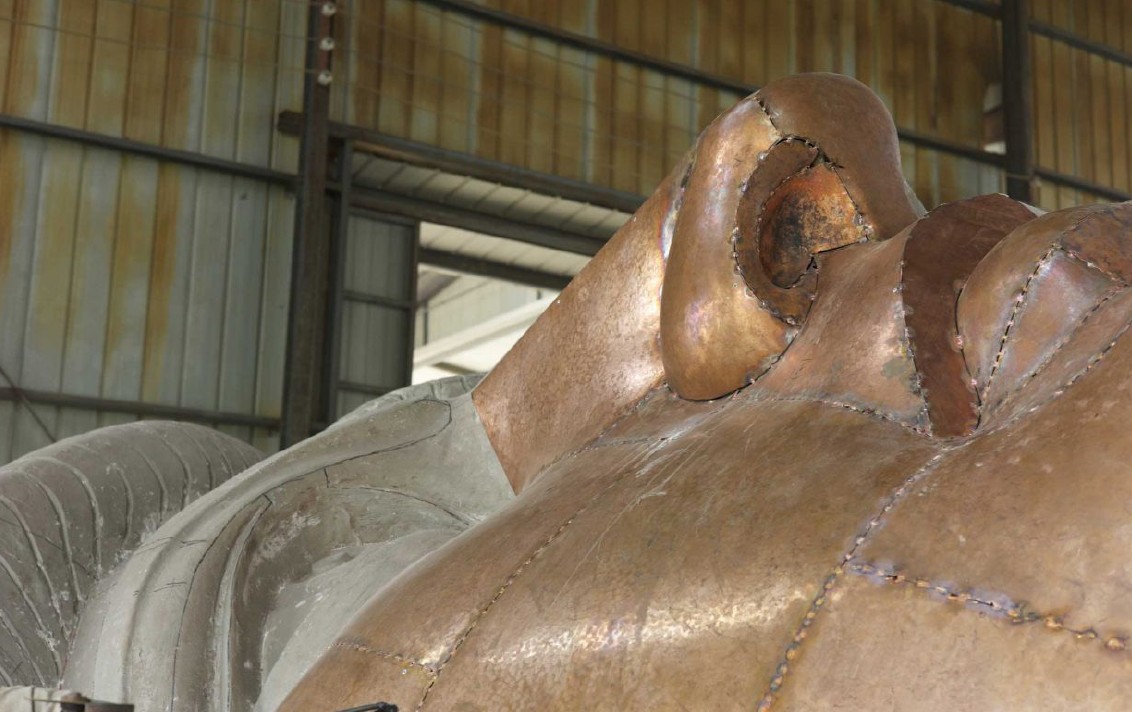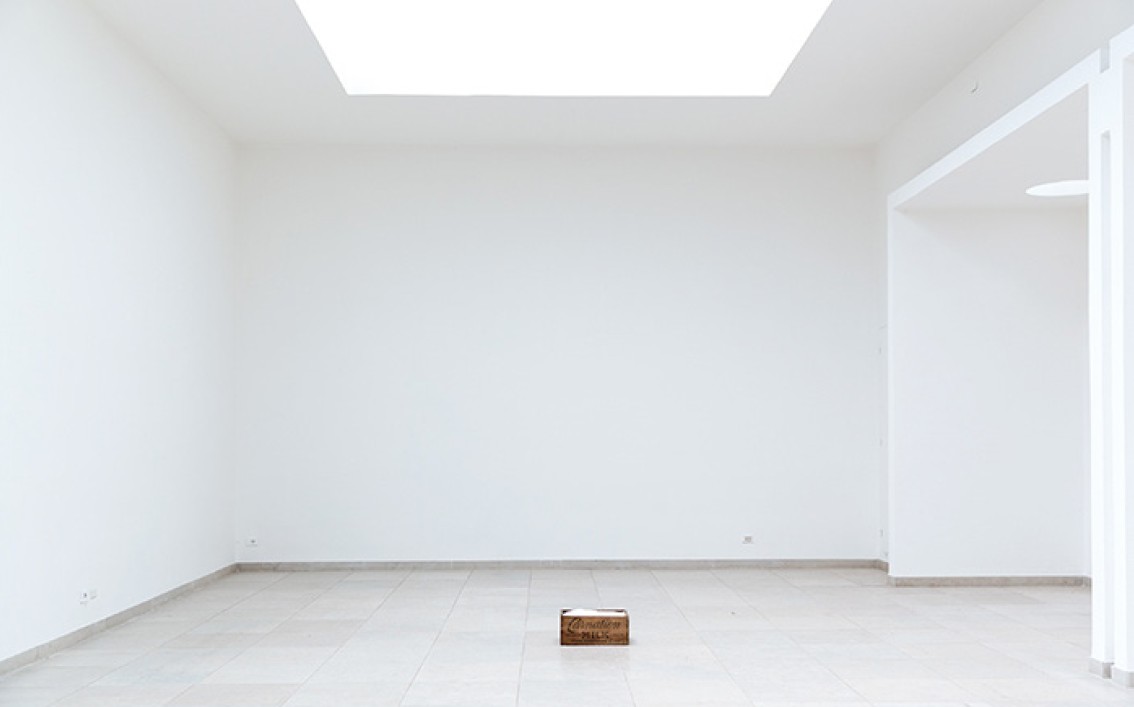Dust, thirst, loneliness, waiting, fatigue, life
A new chapbook by writer and editor Sean O’Toole.
Cape Town-based journalist, critic and editor Sean O’Toole has a new delightfully rich self-published chapbook titled Dust, thirst, loneliness, waiting, fatigue, life; a pretty literary gem sprinkled with whimsy and phrases that ignite one’s mind’s eye, as only his writing could. Thinking about the idea of the sample (referring to the musical metaphor here), O’Toole “samples” a variety of practitioners and thinkers in this work. On each page the reader is privy to stories from Kayes in Mali through the words of the writer and those with whom he spent his time.
SOUTH SOUTH interviewed O’Toole to find out more about his practice and the inspiration for the chapbook.
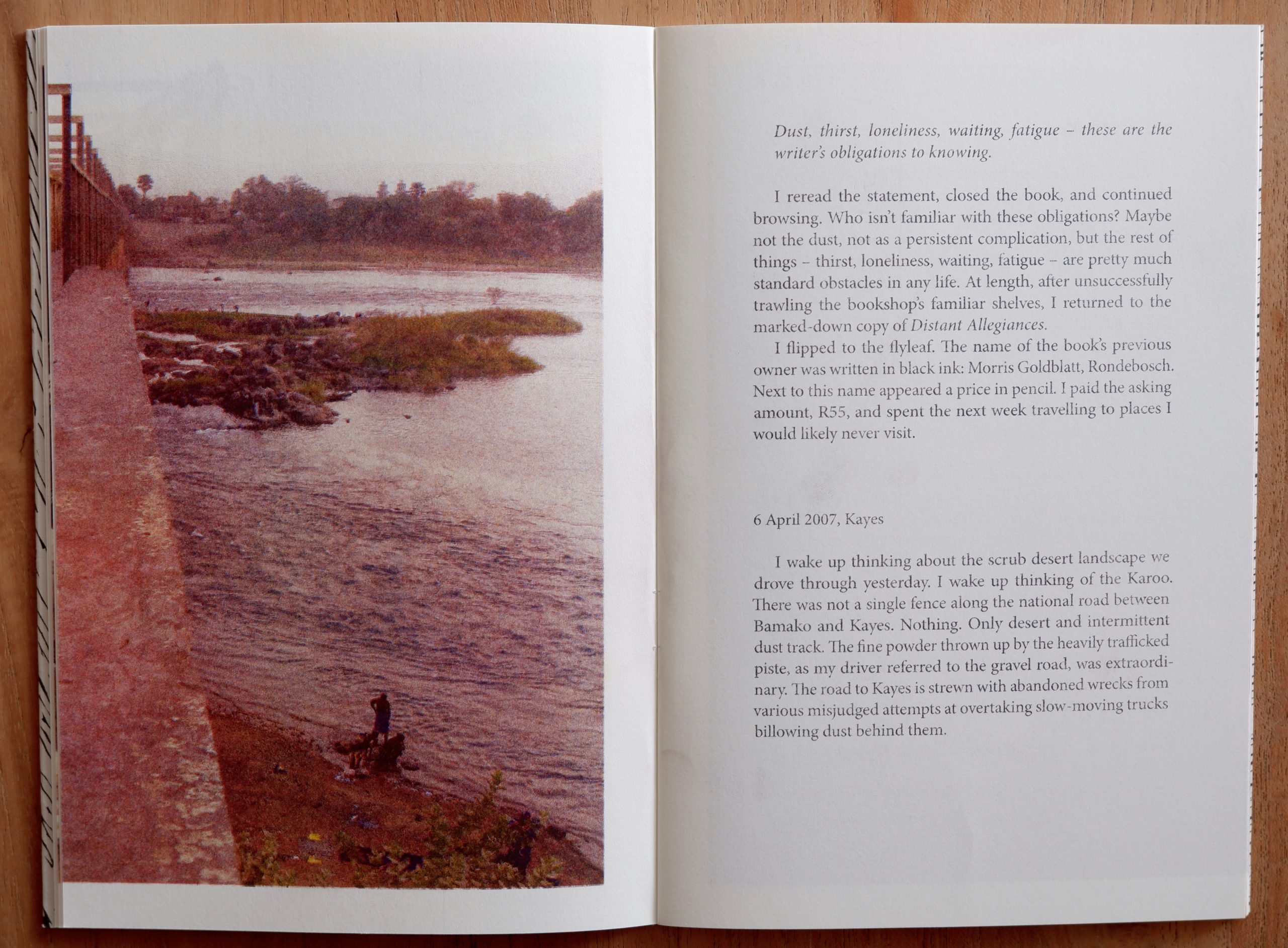
Image courtesy of Sean O’Toole
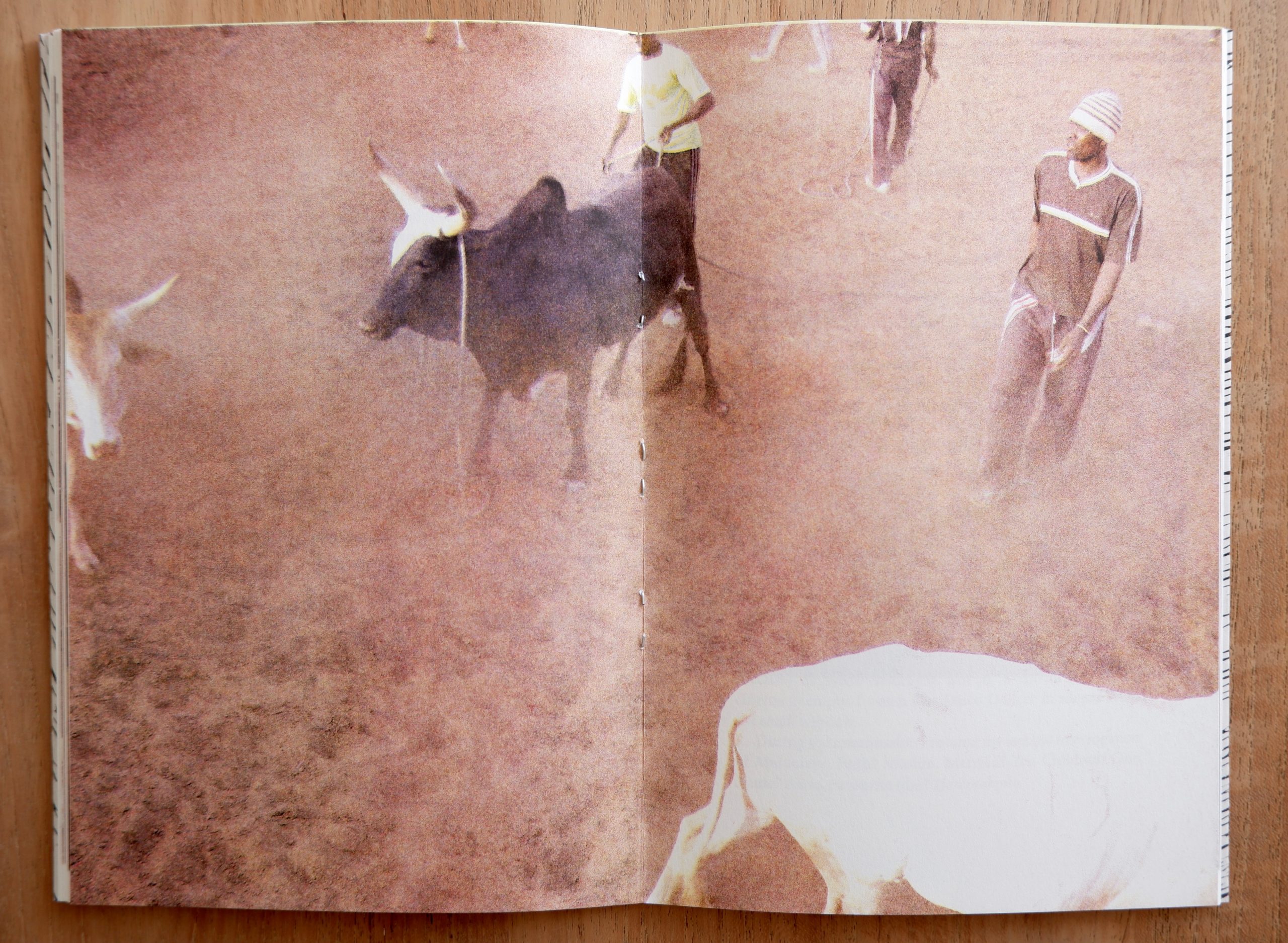
Image courtesy of Sean O’Toole
SOUTH SOUTH (SS): How do you like to describe your relationship to the creative landscape within South Africa, and elsewhere?
Sean O’Toole (SO): Felicitous. Awed. Invested. Not enough? How about inadequately qualified? I am not alone in this, I think. I have long found consolation in something the Johannesburg poet, novelist and critic Lionel Abrahams wrote of himself in relation to the community he formed part of: “I am a critic without scholarship or theory, an editor without professionalism, a publisher without organisation or capital.” Ditto.
SS: Could you please share the inspiration behind your new chapbook Dust, thirst, loneliness, waiting, fatigue, life?
SO: Sometime in 2006, the dearly missed art dealer Henri Vergon phoned me and asked if I’d like to accompany an Austrian film crew on a road trip through Mali. A year later, I found myself high on antimalarial medication in Kayes, a small city on the Sénégal River in western Mali. My contact, a Beninese man with an explosion of hair, told me: “Don’t make journalism, make art!” I spent my days wandering the dusty streets. I chatted with truck drivers about first kisses. I looked at uncollected photos at a local portrait studio. I followed cows from a livestock market to the abattoir. I was somehow making art, I think.
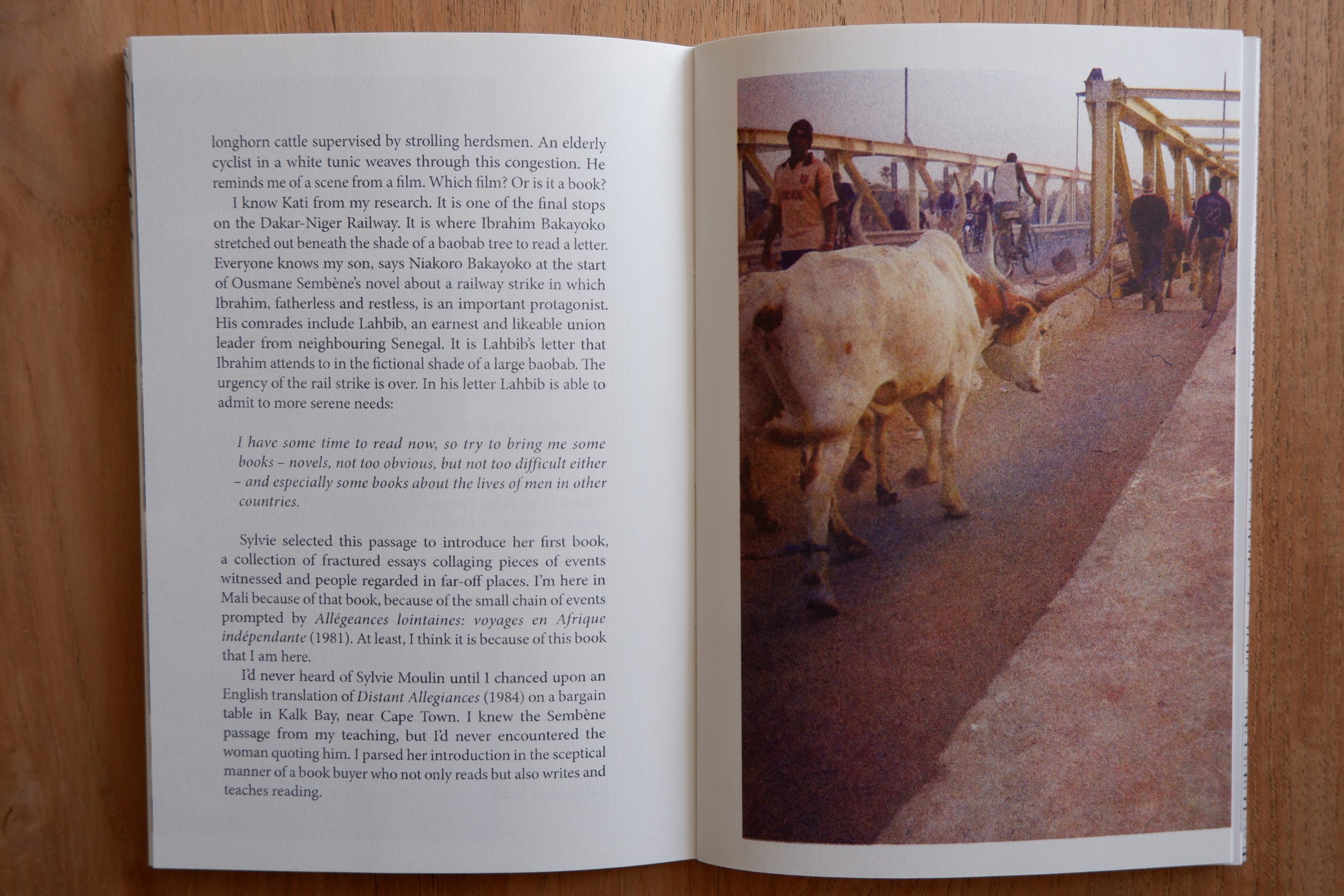
Image courtesy of Sean O’Toole
SS: What are your grounding thematic considerations in this work?
SO: I’m interested in the idea of the sample. I’m purposefully using a musical metaphor here, as opposed to plainly declaring my interest in the literary quotation. Hank Shocklee, a founding member of Public Enemy, the most up-for-it live band I’ve ever seen play in Cape Town, said of the sample, of the process of lifting riffs from someone else and using them for new purposes, that “it forces us to go backwards in history”. The title of my chapbook hopefully does that. It is a corruption of a line from Polish journalist Ryszard Kapuściński’s travel memoir The Shadow of the Sun. Kapuściński? Google Stan Douglas or Jo Ractliffe. They both sampled him in their own unique ways. Dust, etc – as I prefer to call my little book – samples, rather than merely quotes, a host of writers and doers, among them Roland Barthes, Yve-Alain Bois, Marguerite Duras, Rosalind Krauss and Ousmane Sembène. Each deserves reconsideration.
SS: How does the chapbook fit into how you have mapped out your practice?
SO: Aside from my work as a journalist, critic and editor, I also write fiction. This is my second self-published chapbook after The Magic Stones, which announced itself to the world as an object in a 2019 exhibition organised by artists Chloë Reid and Matty Roodt at The Atelier in Johannesburg. Thinking about it now, Chloë has been a godsend. In 2018 she commissioned a new short story from me for an exhibition that she curated at the Glasgow School of Art. I enjoyed the process and started writing fiction again. I sort of fell of my bike after my debut collection of short stories appeared in 2006. I am proud of that first attempt, but have lost my faith in social realism as a way to hold a story. I have returned to fiction with a different ambition: I’m interested in how the essay and cultural criticism can energise fiction. It is by no means a new or unique approach. J. M. Coetzee does it brilliantly, as do Richard Powers and Teju Cole. W. G. Sebald was a master at it. This kind of writing can be frustratingly digressive, but this is how I tell stories to friends, crookedly, aimlessly, like an urban walker.
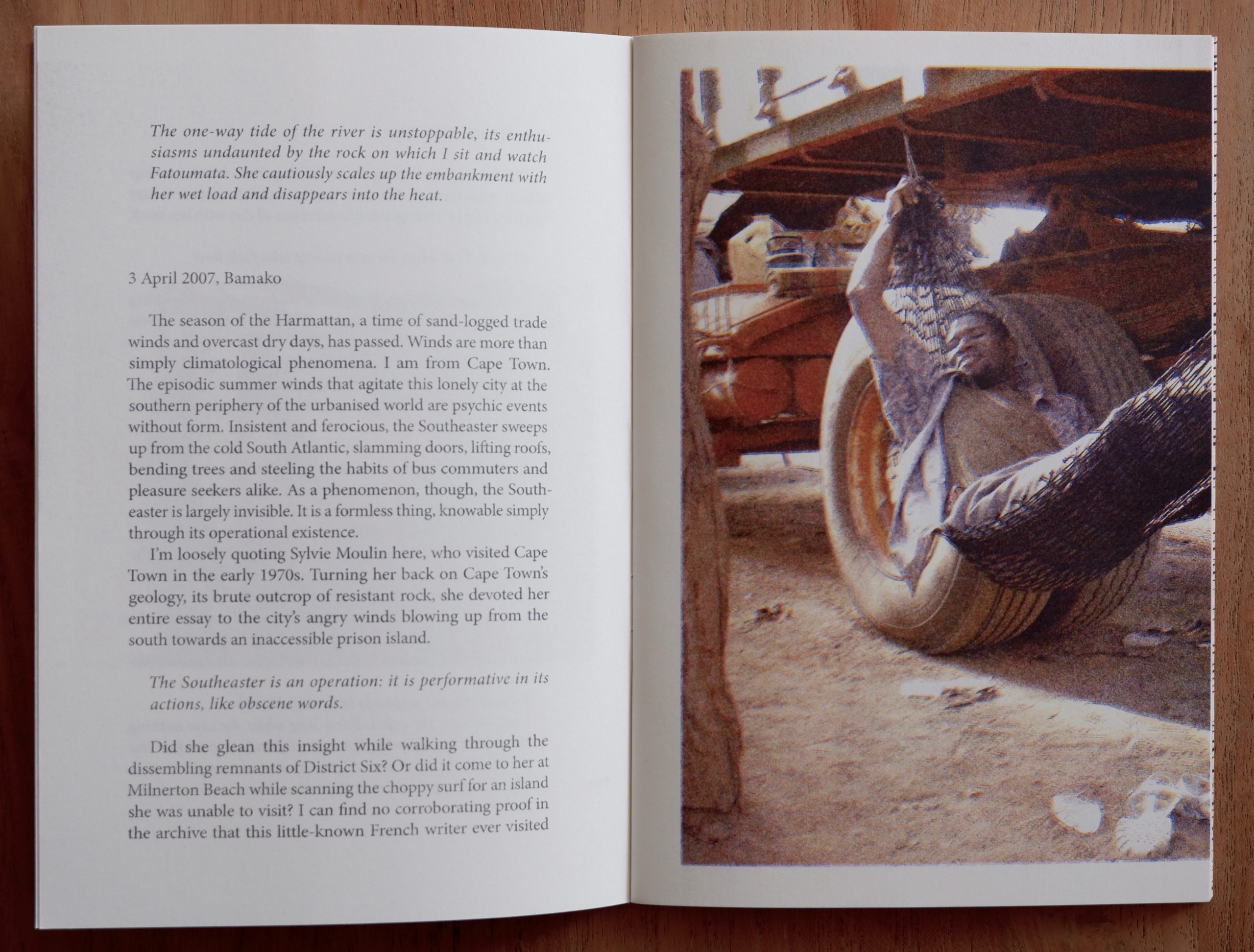
Image courtesy of Sean O’Toole
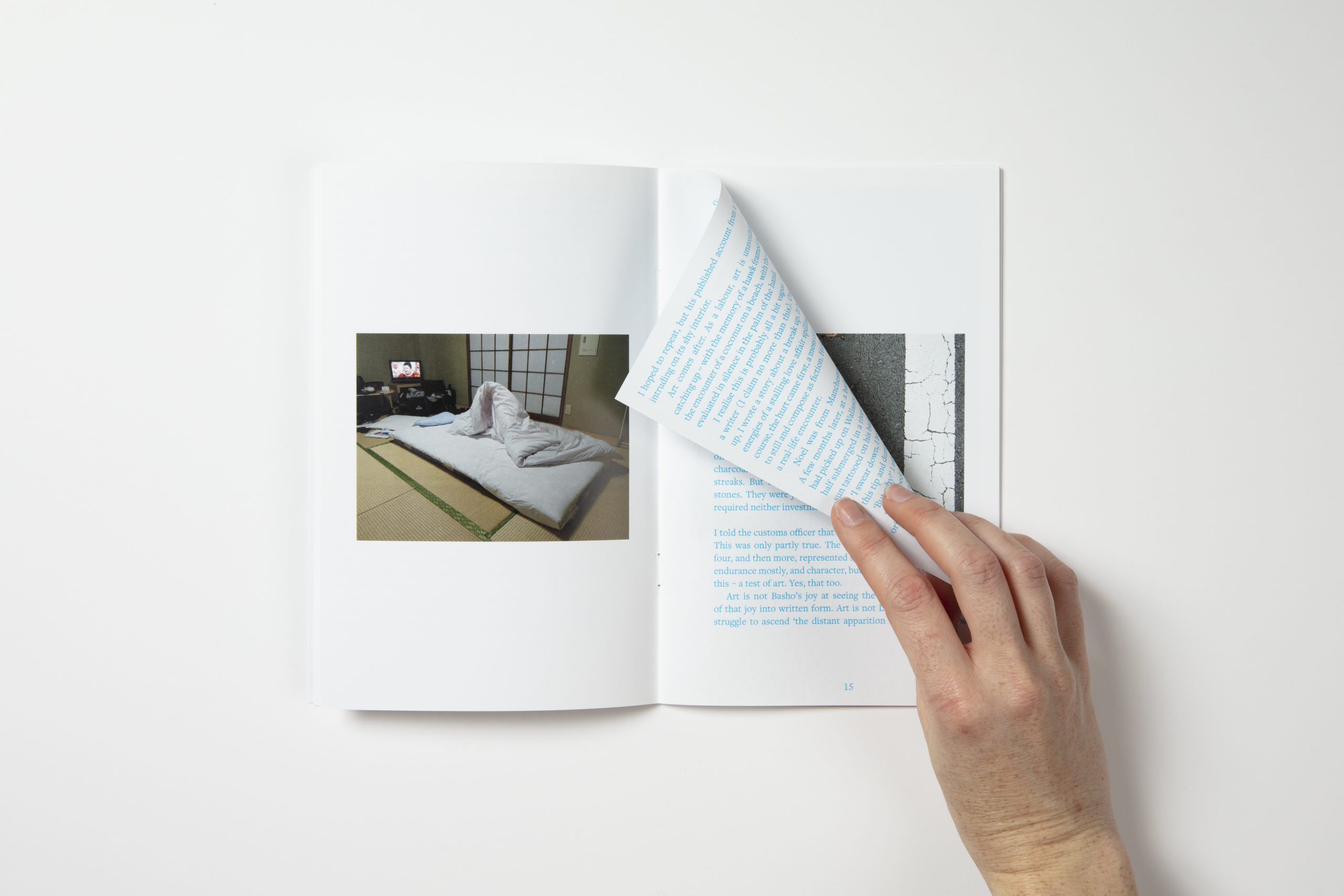
Image from The Magic stones
Courtesy of Sean O’Toole
SS: What were significant moments during your research process that influenced the way in which you chose to present this chapbook or consider narrative structures?
SO: Three. Meeting myself on a lonely road in the dark and enjoying the conversation. Smiling after the book’s designer, artist Dale Lawrence, who also made the enigmatic linocut on which the fabulous cover design is based, said he googled me after reading the story. Hearing a masked audience at a public reading organised by Best Friend Club chuckle when I read a passage about the porn cinema I visited in Kayes. Incidentally, reading a published story is research – towards the next book.
SS: Who do you imagine as the reader for this work? Is this an important consideration for your writing process?
SO: Anyone interested in navigating that fuzzy space between experience and the translation of experience into words. Anyone who agrees that fiction offers a means to negotiate the truth.
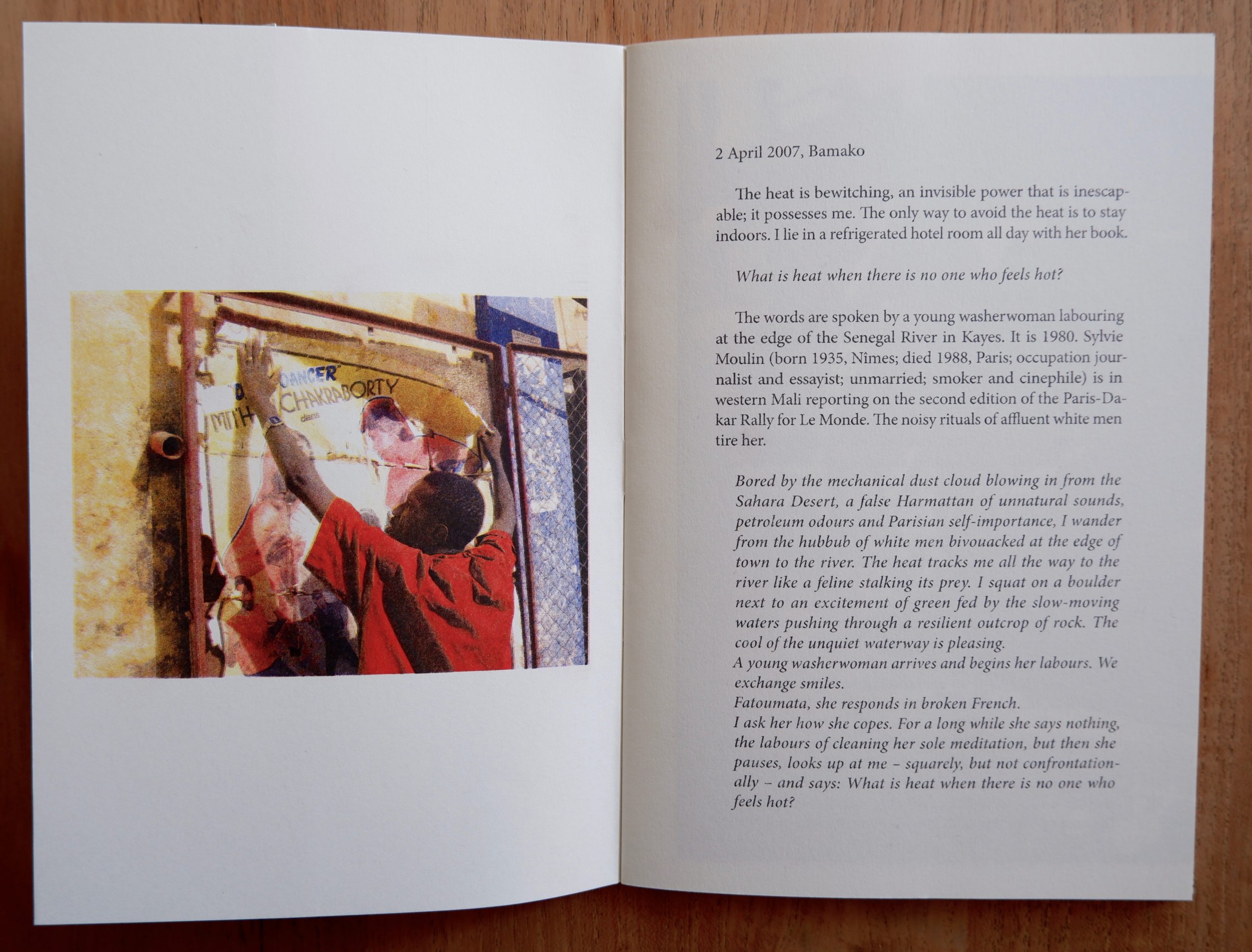
Image courtesy of Sean O’Toole
SS: Is there anything else that you would like to share about this book?
SO: Dust, etc. owes a great deal to two generous individuals: artist Dale Lawrence and Candice Ježek of Dream Press, both from Cape Town. Candice is the proprietor of South Africa’s only riso printing studio. Her enthusiasm and insight into this stencil-based printing technique helped me translate an assortment of nothing-special jpegs into warm companions for my text.
SS: Where can people buy the book?
SO: Dream Press, Clarke’s Bookshop and from me (DM me on Instagram).
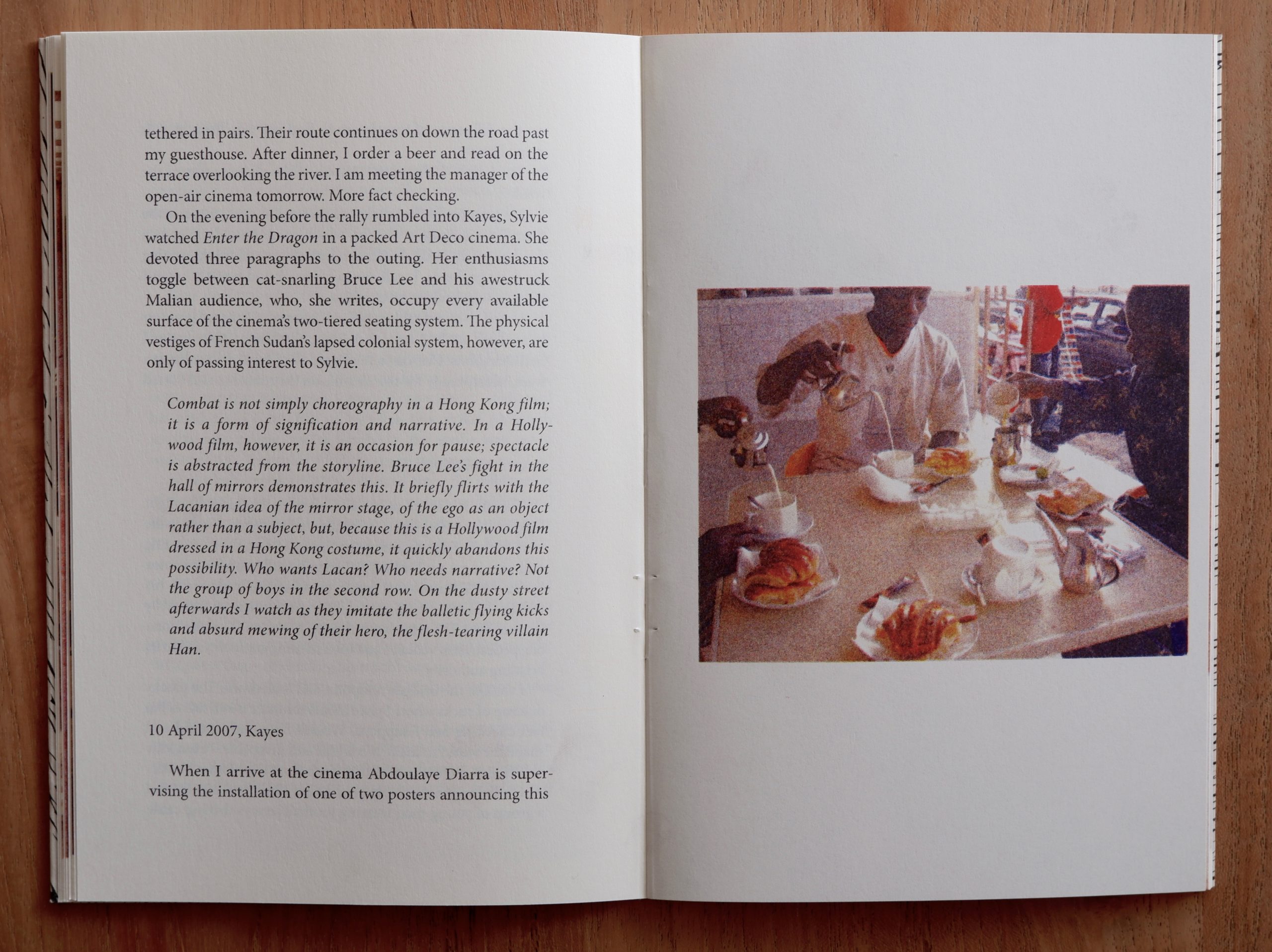
Image courtesy of Sean O’Toole
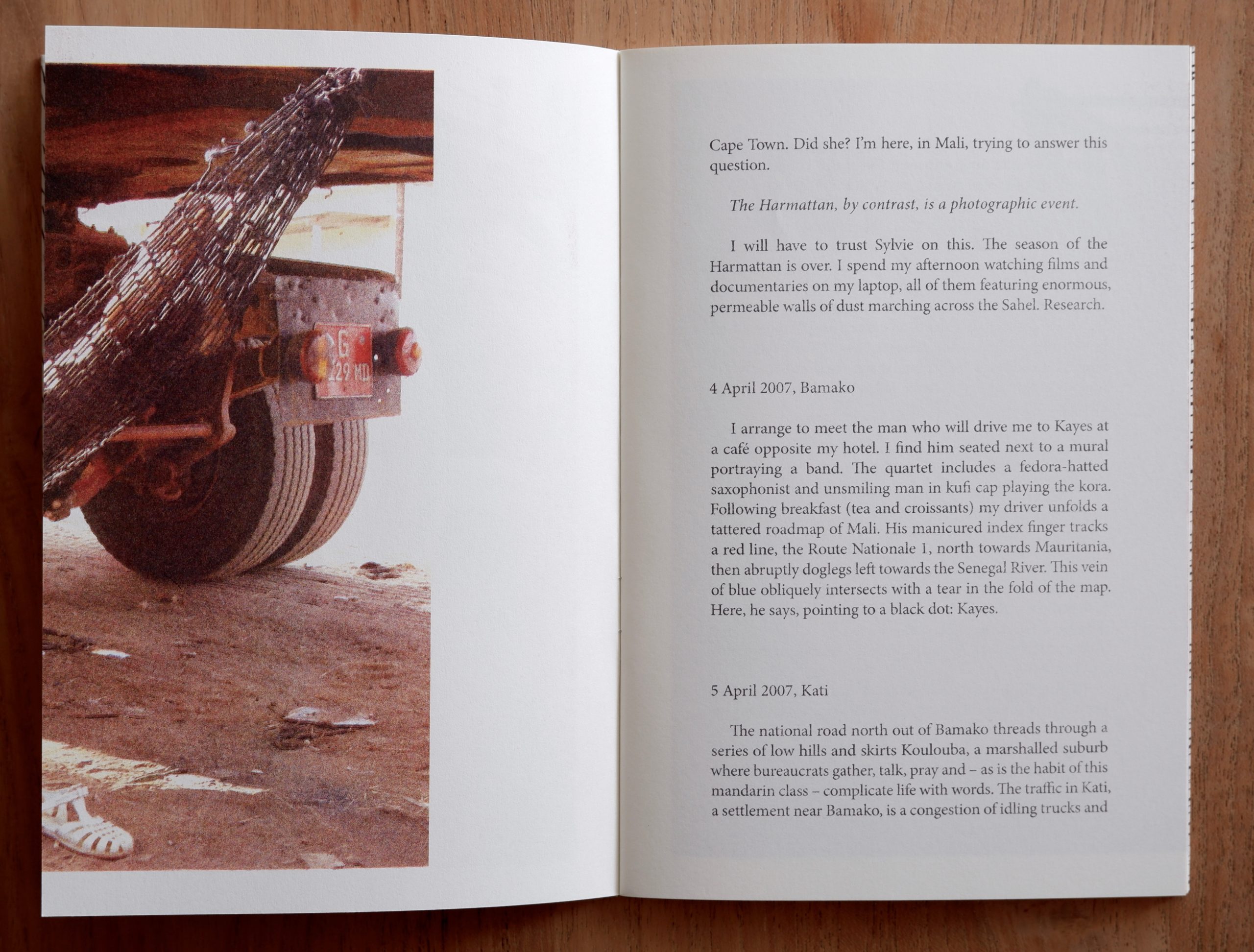
Image courtesy of Sean O’Toole
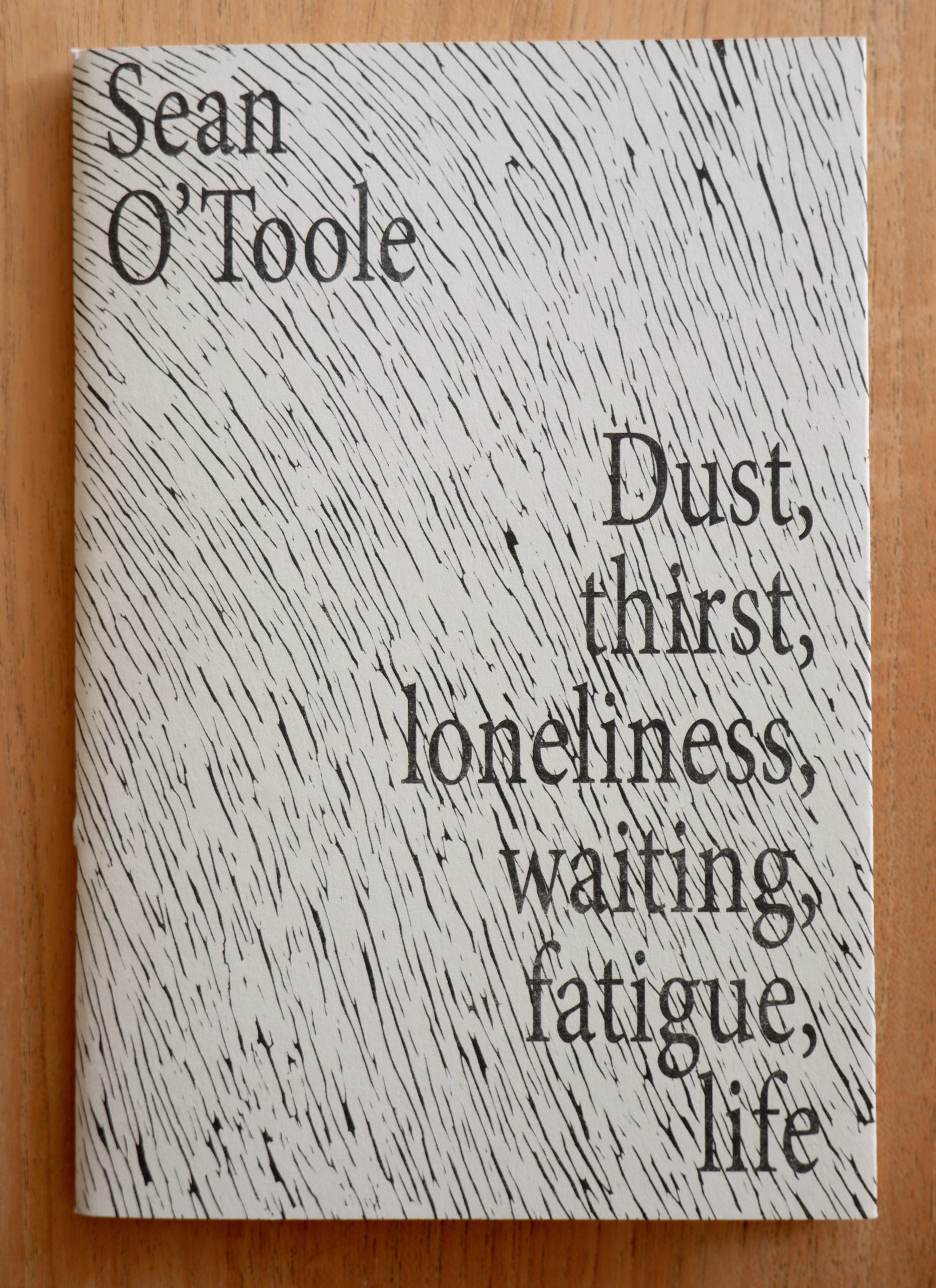
Cover of Dust, Thirst, Loneliness, Waiting, Fatigue, Life
Image courtesy of Sean O’Toole
CREDITS
Images courtesy of Sean O’Toole.
Sean O’Toole is writer and editor based in Cape Town. He has published two books, Irma Stern: African in Europe – European in Africa (2021) and The Marquis of Mooikloof and Other Stories (2006), as well as edited three volumes of essays, most recently The Journey: New Positions on African Photography (2020). He is a contributing editor to Frieze magazine; a founding editor of the journal Cityscapes; and past editor of the quarterly magazine Art South Africa. His essays, cultural journalism and reviews have appeared in numerous publications, including Aperture, Artforum, Frieze, Mail & Guardian and Sunday Times. He has contributed essays to recent monographs for Michael Armitage, David Goldblatt, William Kentridge, Gareth Nyandoro, Jo Ractliffe, Tracey Rose and Mikhael Subotzky, among other artists, as well as contributed to various editions of publisher Phaidon’s on-going Vitamin series of artist surveys. He is currently working on an exhibition and book project surveying the South African photobook since 1950.

